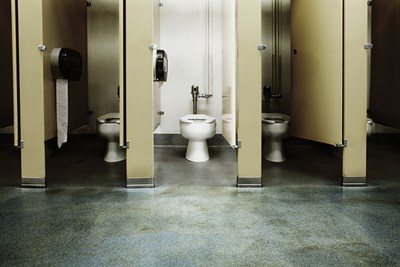Even if you wash your hands, carry around hand sanitizer, and cover your nose when you sneeze, you can’t escape germs. Most people clean and sanitize the obvious places, such as toilets, countertops, and floors, but there are plenty of other everyday places where disease-causing bacteria like E. coli or virus particles from your sick coworker like to lurk.
Here is a list of things that you probably aren’t cleaning very often, but definitely should be. Warning: you’ll probably want to take a shower after you finish reading this. Or five.
Jewelry
When is the last time you gave your earrings or your wedding band a good scrubbing? If you’re like most people, the answer is probably a big fat never. Disinfecting our jewelry is something we don’t usually think about very regularly. However, according to experts on the subject, we should be paying a lot more attention to the accumulation of dirt and bacteria on our jewelry than we do.
Everything from food to fecal matter can come into contact with your jewelry, though most of the bacteria actually originates from the skin itself, as there are millions of organisms per square centimeter that are present on the surface of the skin. Additionally, skin constantly sheds dead cells, which can potentially carry hundreds of thousands of bacteria and microorganisms. If these cells gather in warm, moist places, such as inside an earring or underneath a wedding band, they will develop a bio-film that can actually protect infectious bacteria and help it to survive for longer.
Cell Phones
Since our cell phones have practically become an extension of our own hands, it is extremely easy for them to become just as contaminated. In fact, recent research in the UK found that one in six cell phones are contaminated with fecal matter. However, it’s not as easy to wash our cell phones as it is to wash our hands, so cleaning them as regularly becomes a non-priority, which makes it even easier for bacteria to accumulate and be transferred from person to person!
Keyboards
One of the biggest hotbeds for germs might be the workplace. According to this survey, 24% of Americans admit to coming to work even when they know they are sick. Since it is so easy for viruses and bacteria to spread throughout an office setting, anything you touch regularly could potentially be harboring infectious germs, including your keyboard, mouse, and office phone. One study found that the average desktop has over 400 times more bacteria than the average toilet seat. The simple solution to this problem is to use disinfecting wipes daily on your keyboard to make sure you aren’t picking up any germs from your office while you are working.
Remote Controls
Whether at home or in a hotel, you will probably find yourself reaching for the remote when you are trying to relax. But you might want to think twice—one recent study found that, next to the light switch, the remote control was the most contaminated surface found in hotel rooms. Though not quite as extreme, this rings true for your home as well. Things like remote controls that are regularly handled by an entire household and rarely cleaned are a hotbed for germs and bacteria. Aim to disinfect your remote control at least once a week, as well as video game controllers and tablets. You can do this using disinfecting wipes—just make sure to disconnect everything beforehand.
Shoes
Just think about everywhere your shoes have been—inside bathrooms, on public sidewalks, etc. A recent study in Arizona found up to nine different species of bacteria living on people’s shoes. These types of bacteria are able to cause infections in our stomachs, lungs, and even eyeballs. Additionally, bacteria are able to thrive on the bottoms of our shoes, since we are constantly picking up more debris everywhere we go. You’ve probably been in a home where everyone was expected to take their shoes off at the door, and this is really not a bad idea, especially if you have small children who are crawling or walking.



